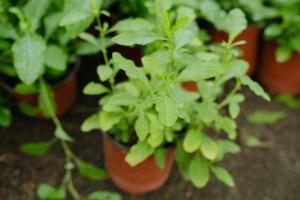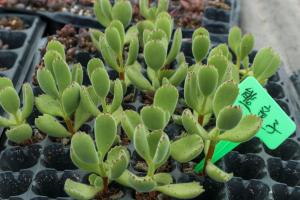Sponge cutting, rooting rate soared
Recently, many flower friends are cutting, and many people reflect that there is a "fake life" after cutting. Although new leaves grow, they do not grow roots. If you use sponge cutting, you can greatly improve the rooting rate

Operation method:
1. Prepare sponge, black is the best, because black shading is more conducive to rapid rooting. Cut the sponge into small squares 3 cm high and 2 cm wide, and use tools to punch in the middle of the sponge
2. Insert the cuttings into the sponge
3. Pour about 2cm of water into the bottle and put the sponge block into the bottle without capping it
4. The remaining milk tea cup can also be used, and the mouth of the cup is large and the operation is more convenient
5. After putting the sponge into the cup, put it on the windowsill to receive the light without changing the water. Generally, it can take root in about 20 days. Cut the plastic bottle and take out the branches
6. When the pot is on, the sponge blocks can be transplanted into the flower pot together, and the survival rate is very high
Paper towel root pressing, high altitude strip pressing artifact
Flowers that are not easy to take root, such as triangle plum and camellia, can be cut by pressing strips at high altitude, and the effect is better with the help of paper towels

Operation steps:
1. Prepare paper towels and an ordinary syringe
2. Select the position of the pressing strip, peel the branch for 0.5 ~ 1 cm with a knife, and scrape it clean
3. Mix the rooting agent with water and dip it with a cotton swab to the position of girdling
4. Fold the toilet paper in half, wrap it in the peeling position, wrap it with a layer of fresh-keeping film, and tie both ends with thread. Pierce the film with a needle
5. Draw clean water into the syringe and inject it into the toilet paper
6. In order to root faster, you can wrap a layer of opaque paper outside the plastic wrap
7. The root system can be cut out in about 30 days
Fish tank bottom sand cutting, farewell to the black rod
Some cuttings are prone to rot and black stem when cutting. Many are due to poor water permeability of the medium or bacteria. You can try cutting with fish tank bottom sand

Operation steps:
1. Prepare some fish tank bottom sand. If you don't have it at home, you can also use pure vermiculite and wash it with clean water for several times
2. Disinfect the bottom sand (or vermiculite) with potassium permanganate or carbendazim
3. Insert the branches to be cutted into the sand and spray water on the medium every day to maintain humidity
4. Cutting with the bottom sand of the fish tank, there is basically no black rod phenomenon, and the survival rate is higher than that of pure vermiculite
Plastic bottle cutting is difficult if you don't want to take root
Many novices say they have never been inserted alive. Is there a way that anyone can insert alive with a survival rate of 100%? Really, a bottle, a foam board is enough! p>

Operation steps:
1. Find a large plastic bottle and cut the top half of the bottle, but don't cut it completely
2, insert cuttings into the foam board and pour 1/3 clear water in the bottle. Put the foam board in the bottle and let the foam float on the water. Finally, stick the bottle with tape
3. After the bottle cap is pierced with 2 ~ 3 small holes, put the bottle in a place with sufficient light. It can take root in about half a month without changing water
4. Don't rush to plant after growing roots. Untie the tape, put the bottle in the semi shade, and put it in the basin after 1 ~ 2 days. The survival rate is higher
Paper cup pot method, cutting survival is no longer difficult
Sometimes, although the branches have taken root, the phenomenon of "stiff seedlings" appears after being put into the pot because they do not adapt to the environment. There are no new buds, and the stems turn black after a long time. You can try the pot on paper cup method to avoid

Operation steps:
1. Find a disposable paper cup and put a hole in the bottom of the cup
2. Stick the hole with adhesive tape and lengthen the tape head to facilitate removal in the future
3. Pour water into the cup. The water level is about one third of the body of the cup
4. Sprinkle a layer of fine soil into the cup, and then put the branches into the cup by hand. When the root system just touches the fine soil, continue to sprinkle the soil without pressing with your hands
5. After planting, you can take off the tape at this time, and the excess water will leak out of the small mouth. Put the paper cup in the shade. After about a week, when the soil is dry, the slow seedling is completed without watering
6. After the soil is dry, cut the paper cup and plant it directly into a new basin with the soil lump. In this way, the survival rate of the pot is basically 100%, and the problem of "easy rooting, difficult survival" is perfectly avoided
That's all for the little knowledge of cutting methods
After reading, do you think cutting has become easier
You can try it when you're free

 how many times do yo...
how many times do yo... how many planted tre...
how many planted tre... how many pine trees ...
how many pine trees ... how many pecan trees...
how many pecan trees... how many plants comp...
how many plants comp... how many plants can ...
how many plants can ... how many plants and ...
how many plants and ... how many pepper plan...
how many pepper plan...






























